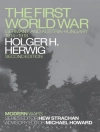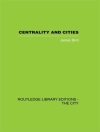The Soviet Gulag was one of the largest, most complex, and deadliest systems of incarceration in the 20th century. What lessons can we learn from its network of labor camps and prisons and exile settlements, which stretched across vast geographic expanses, included varied institutions, and brought together inmates from all the Soviet Union’s ethnicities, professions, and social classes?
Drawing on a massive body of documentary evidence, Rethinking the Gulag: Identities, Sources, Legacies explores the Soviet penal system from various disciplinary perspectives. Divided into three sections, the collection first considers ‘identities’—the lived experiences of contingents of detainees who have rarely figured in Gulag histories to date, such as common criminals and clerics. The second section surveys ‘sources’ to explore the ways new research methods can revolutionize our understanding of the system. The third section studies ‘legacies’ to reveal the aftermath of the Gulag, including the folk beliefs and traditions it has inspired and the museums built to memorialize it. While all the chapters respond to one another, each section also concludes with a reaction by a leading researcher: geographer Judith Pallot, historian Lynne Viola, and cultural historian and literary scholar Alexander Etkind.
Moving away from grand metaphorical or theoretical models, Rethinking the Gulag instead unearths the complexities and nuances of experience that represent a primary focus in the new wave of Gulag studies.
Tabela de Conteúdo
1. Introduction: Gulag Studies since the Archival Revolution, by Alan Barenberg and Emily D. Johnson
Part I: Identities
2. Religious Identity, Practice, and Hierarchy at the Solovetskii Camp of Forced Labor of Special Significance, by Jeffrey S. Hardy
3. Censoring the Mail in Stalin’s Multi-ethnic Penal System: The Use of Languages Other Than Russian in Soviet Inmate Correspondence, by Emily D. Johnson
4. ‘Who are you in life?’: The Gulag Reputation System and its Legacies Today, by Gavin Slade
5. The Real Gulag: Commentary on the ‘Identities’ Section, by Lynne Viola
Part II: Sources
6. ‘They won’t survive for long’: Soviet Officials on Medical Release Procedures, by Mikhail Nakonechnyi
7. Applying Digital Methods to Forced Labor History: German POWs During and After the Second World War, by Susan Grunewald
8. Framing Gulag Memoirs: A Distant Reading, by Sarah J. Young
9. Researching the Gulag in the Era of ‘Big Data’: Commentary on the ‘Sources’ Section, by Judith Pallot
Part III: Legacies
10. The Role of Nature in Gulag Poetry: Shalamov and Zabolotsky, by Josephine von Zitzewitz
11. ‘I would very much like to read your story about Kolyma’: Georgii Demidov, Varlam Shalamov, and the Development of Gulag Prose, 1965-67, by Alan Barenberg
12. The Necropolis of the Gulag as a Historical-Cultural Object: An Overview and Explication of the Problem, by Irina Anatolievna Flige (translated by Josephine von Zitzewitz)
13. Sites and Sounds of the Camps: Commentary on the ‘Legacies’ Section, by Alexander Etkind
14. Afterword, by Alan Barenberg and Emily D. Johnson
Index
Sobre o autor
Alan Barenberg is the Buena Vista Foundation Associate Professor of History at Texas Tech University. He is author of Gulag Town, Company Town: Forced Labor and Its Legacy in Vorkuta. Emily D. Johnson is the Brian and Sandra O’Brien Presidential Professor of Russian at the University of Oklahoma. She is author of How St. Petersburg Learned to Study Itself: The Russian Idea of Kraevedenie and editor and translator of Gulag Letters by Arsenii Formakov.












